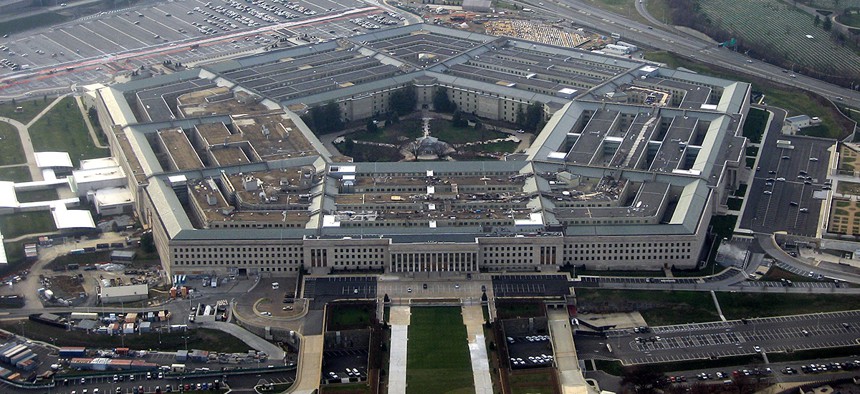Tech Is Central To Pentagon’s Management Reform

Flickr user David B. Gleason
The new chief management officer, and his purview over IT, are part of bigger reform efforts at the Defense Department, according to a former official.
The Pentagon is about to have a powerful new management leader in its ranks, a position it has been formulating for almost a decade. But before the chief management officer became a standalone position this year, Congress added some IT management authorities to its responsibilities.
President Donald Trump nominated Defense Department Deputy Chief Management Officer John Gibson to serve as the Pentagon’s first chief management officer, a new role positioned third in line behind the secretary of defense. But along with the new authorities being given to the CMO also come new responsibilities in the area of IT management, the exact nature of which will develop as Gibson—if confirmed—takes on the new position.
With a focus on reforming the department’s business operations by giving the CMO more power, giving that role authority over IT decisions makes sense, according to Beth McGrath, the first DCMO when the position was stood up in 2008 and now managing director of Deloitte’s Federal Practice.
“Over time, with the increased focus from Congress and the department on how do we optimize the business operations, so much of it, especially now, is driven by IT. Business should be IT-enabled,” she told Nextgov. “Over time, the legislation has brought together business performance and IT to say, ‘You can’t think about them separately’ because business should be—and is—IT-enabled, then we really need to think about how we’re driving the business to include the IT aspect.”
McGrath noted during her time as DCMO, the major driver for business reform was acquisition, which was placed under her purview. Now, as IT permeates operations, it makes sense to roll some of the IT management authorities into a position with a mandate to get things done.
“I saw the value of these decisions [on management and acquisition] being together,” she said, suggesting that those responsibilities might still make sense under the empowered CMO.
However, responsibilities for acquisition, technology and logistics won’t be transferred to the CMO for now, as those will be split between two other new positions: the undersecretary of defense for research and engineering and undersecretary of defense for acquisition and sustainment.
Despite the historic changes to the Pentagon’s lead management official, McGrath doesn’t see IT leaving the CMO portfolio anytime soon.
“Over time, it will be harder to separate the conversation” between business operations and IT, she said. “Even since I’ve left, things like business analytics and robotics and artificial intelligence: There’s just more and more and more of the merging of these two things, so that it’s really hard to separate them.”
As an example, McGrath cited the administration’s new national defense strategy. Among the three main focus areas is reforming the department, which includes a mandate to streamline costs. This will likely be achieved through an enterprise architecture: an IT solution to a management problem.
With the new authorities given to the CMO, that person should be able to make reforms happen more quickly and “drive investments through approvals,” McGrath said.
The IT management authorities, coupled with a mandate to improve and manage the department’s data analytics “will help drive enterprise reform,” McGrath said, a longstanding goal for the department and Congress.
“Congress keeps trying to find a magic bullet to management,” said Douglas Brook, professor emeritus at the Naval Postgraduate School, former director of the Center for Defense Management Research and currently the visiting professor at the Sanford School of Public Policy at Duke University. “DOD and Congress go back and forth on [how best to interweave business operations with IT operations]—they widen and narrow to try and find the sweet spot.”
Brook noted the department’s IT portfolio is enormous, meaning managing the enterprise will be less about having a strong IT background than leading the components that have a hand in it day to day.
“The CMO really doesn’t manage very much” hands on, he told Nextgov in a recent interview. “Those systems belong to a whole bunch of other people.”
In the end, it will come down to how the department chooses to orient the new role with respect to the CIO and implement those authorities, McGrath said, “Especially right now because they don’t have a [permanent] CIO in the seat.”






